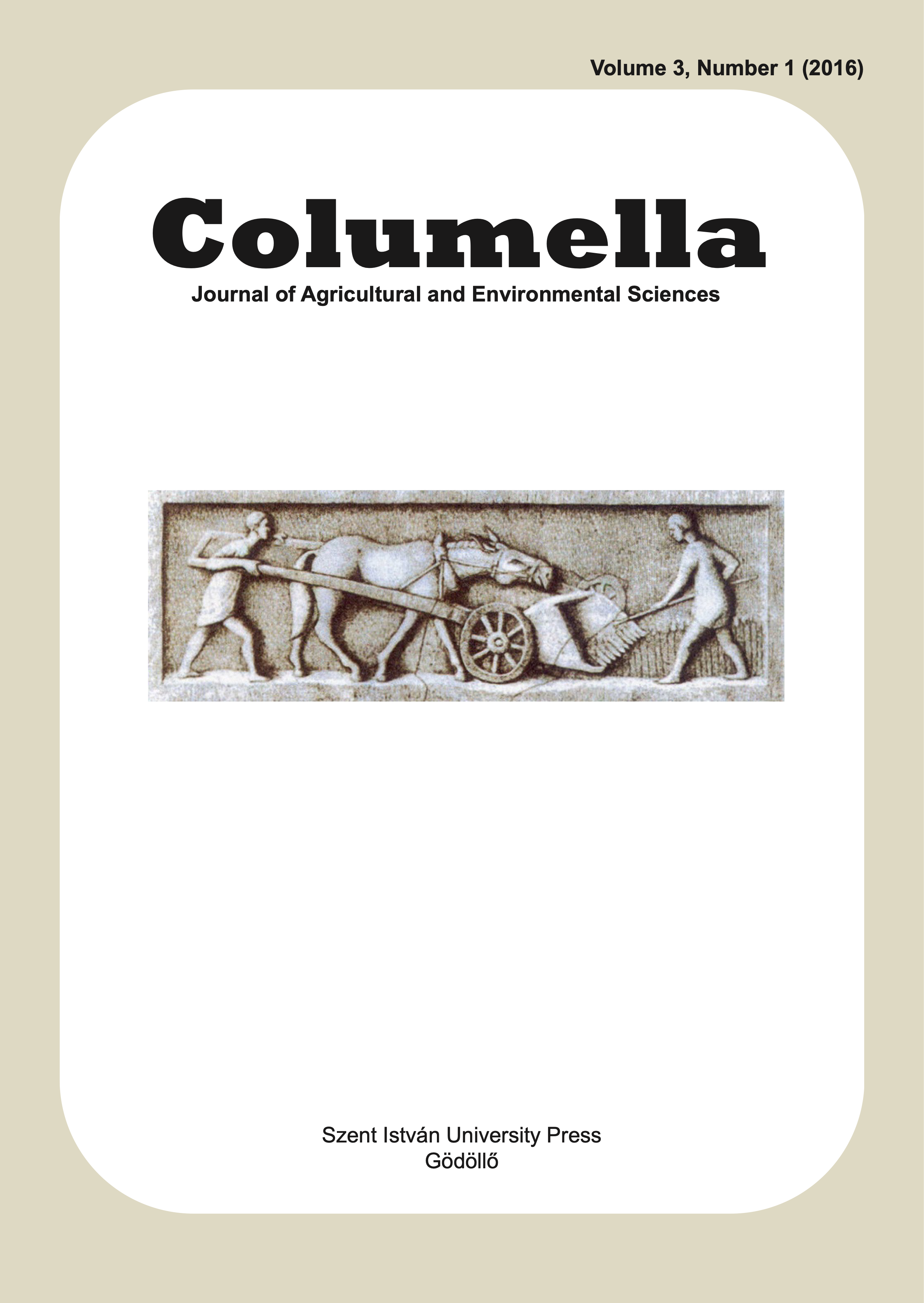The effect of mulching on the abundance and diversity of ground beetle assemblages in two hungarian potato fields
DOI:
https://doi.org/10.18380/SZIE.COLUM.2016.3.1.45Keywords:
potato, leaf litter mulch, hey mulch, pitfall trap, CarabidaeAbstract
The benefits of mulching in potato (Solanum tuberosum L.) production are manifold, such as it provides shelters for natural enemies of pests. The aim of our study was to detect the effect of two organic mulch types on the abundance, diversity and species composition of carabid beetles. Our potato plots were located in two sites with similar habitats including similar soil characteristics. Each plot was treated with hay and leaf litter mulch (hay, leaf, control) with 4 replications at each site. It resulted in 24 samples in each study site annually. Carabid beetles were collected by using pitfall traps in between 2011-2013. We found that due to mulching a larger and more diverse carabid population occurred on potato plots. Both mulching types increased the total number of carabids captured having a 17% higher abundance on hay mulched plots and 14% higher abundance on leaf litter mulched plots. According to the results 28 % of the collected species was found only on mulched plots, whereas only 13 % of the captured species were found only on unmulched areas. For some of the species, especially for Brachinus crepitans (L.), the number of individuals was significantly higher on mulched plots. The two different mulching materials had very similar effects on assemblages of carabid species. The species composition of ground beetles was considerably affected by the two locations, and to a lesser extent by the different time periods. While the dominant species of Budaörs was B. crepitans, the most abbundant carabid beetle at Hidegkút belonged to genus Harpalus. Neither hay nor leaf litter were able to constantly increase the biodiversity of the carabid assemblages on potato plots, because the effect of the two years overwrote the between-treatment effects on carabid diversity. The positive effect of organic mulching on carabid diversity however, was found significant in both years of 2011 and 2012.
Downloads
Published
Issue
Section
License
Copyright (c) 2016 Péter Dudás, Csongor Gedeon, László Menyhárt, Gergely Ambrus, Ferenc Tóth

This work is licensed under a Creative Commons Attribution-NonCommercial-NoDerivatives 4.0 International License.










